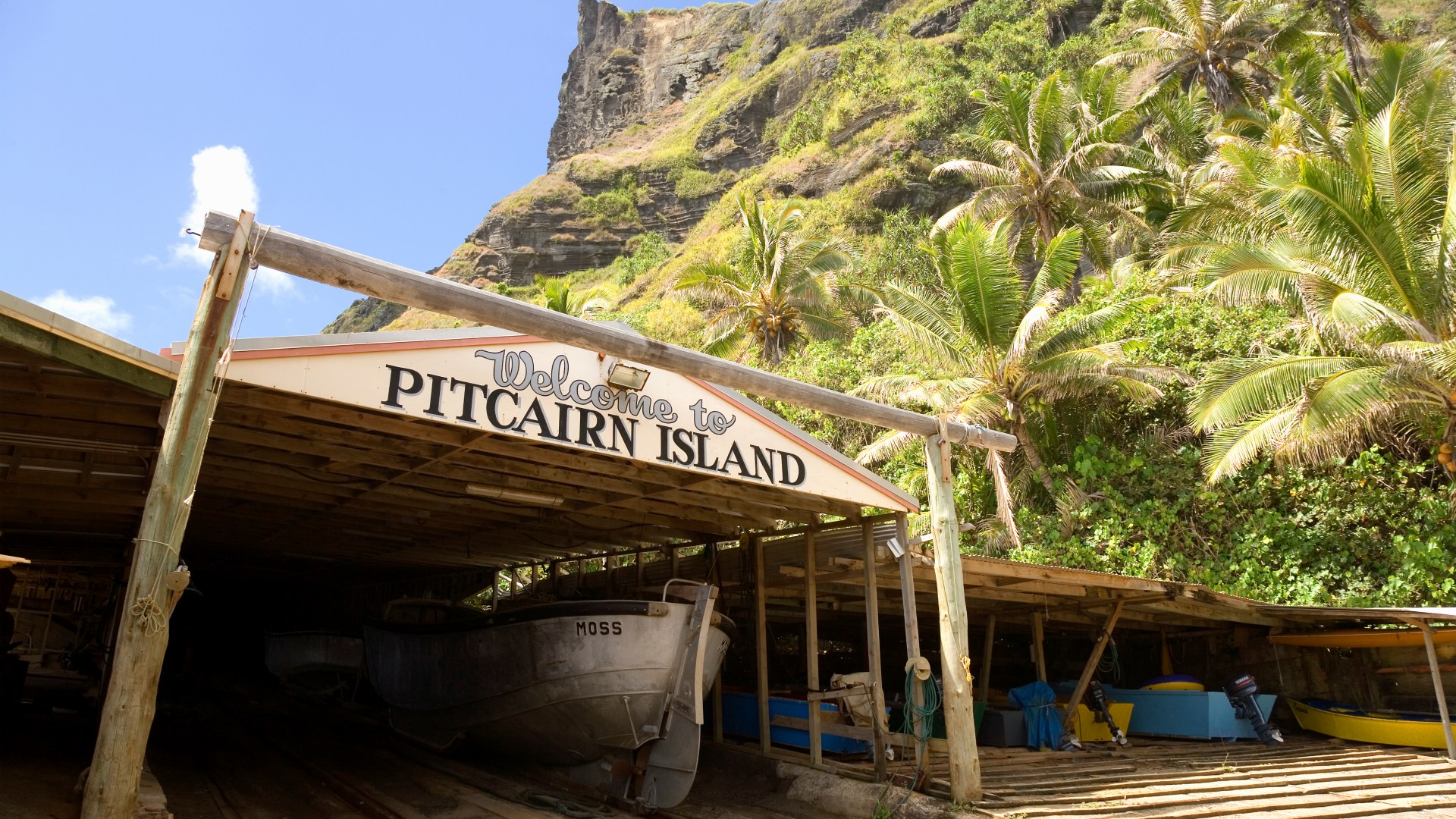A REMOTE paradise island filled with Brit descendants has a dark past that goes back 300 years.
Tucked away in a cluster of islands in the Pacific Ocean, Pitcairn Island is one of the most isolated places in the world – and has a population of just 38 permanent residents.

11

11

11

11

11

11

11

The tiny volcanic island is two miles long, and one mile wide – and its nearest neighbour is Tahiti, 1,350 miles away
It sits in the middle of the South Pacific – around 3,500 miles from both Peru to the east and New Zealand to the west.
Since the 18th Century, Pitcairn has been a remote outpost for the ancestors of the mutinous HMS Bounty crew.
Archaeologists think the first settlers lived on the island as late as the 15th century all the natural resources got exhausted over time.
This is thought to have caused a civil war on the island, eventually leading to the community’s extinction.
However, in 1789, the island was rediscovered by British mutineers who were looking for a place to hide.
British navy ship HMS Bounty was sailing from Tahiti to the West Indies but during the 17-month voyage, a huge rift developed between the crew and its tough young captain – William Bligh.
In the middle of the South Pacific, a rebellion broke out, and Captain Bligh along with a handful of loyal men were forced into a tiny open boat and left to die.
Miraculously, they managed to survive and navigate 4000 miles to safety, despite being in some of the world’s most remote and unforgiving seas.
The eight mutineers from the vessel settled on the island with six Polynesian men and twelve women from Tahiti that they brought with them.
They decided to turn the island into their hideout spot, believing they wouldn’t be found as the location of the island was wrong on maps back then.
And due to the error, the mutineers were able to live on the island with minimal fear of being found.
They set their ships on fire and permanently settled on the island to start a new life.
The islands soon began to live a normal life in the secluded place, but tensions among the residents started to rise over the years.
And the paradise island didn’t live for long.
Within just four years, only four mutineers and ten women and their children remained, with the rest massacred in acts of violence.
Since then, the population of the place began to grow – and peaked in 1937 with some 233 residents who called the island their permanent home.
However, just a few years later, most of the people began to move to New Zealand for better life and opportunities, dramatically decreasing the population.
In 2004, the once-paradise island was rocked by a case of child abuse that made headlines all around the world.
Seven men, including the Pitcairn mayor Steve Christian, were put behind bars for a string of sex offences.
Together they made up almost half of the island’s male population.
They were tried on 41 charges in a separate trial in Auckland, New Zealand – and those found guilty were sentenced a year later.
Now, the rest of the islanders- who are said to be less than 50 in number – are desperately trying to bring more people to prevent the place from dying.
They are trying to restore both its population and tarnished image.
However, with its remote location, it has been quite a challenge for residents who have been offering free visas and relocation costs to potential movers.
Pitcairn-born Jacqui Christian, 44, said: “We’ve been appealing for more people to boost the population and we’ve had many inquiries, but only one person has applied to move to Pitcairn.
“The reality is that we don’t really have any jobs to offer.
“Islanders used to sell stamps to raise funds but, of course, stamp collecting is not as popular as it once was.
“The island has been surviving on government aid since 2004 and now we are trying to become self-sufficient again.”
The main economy of the island is based on tourism as people on cruise trips take a stop to visit the place.
It has several buildings and services, including a church, a tennis court and a museum, which exhibits artefacts from the earliest known recorded settlers and also displays parts from HMS Bounty, which was sailed to the island in the 1790s.

11

11

11

11



